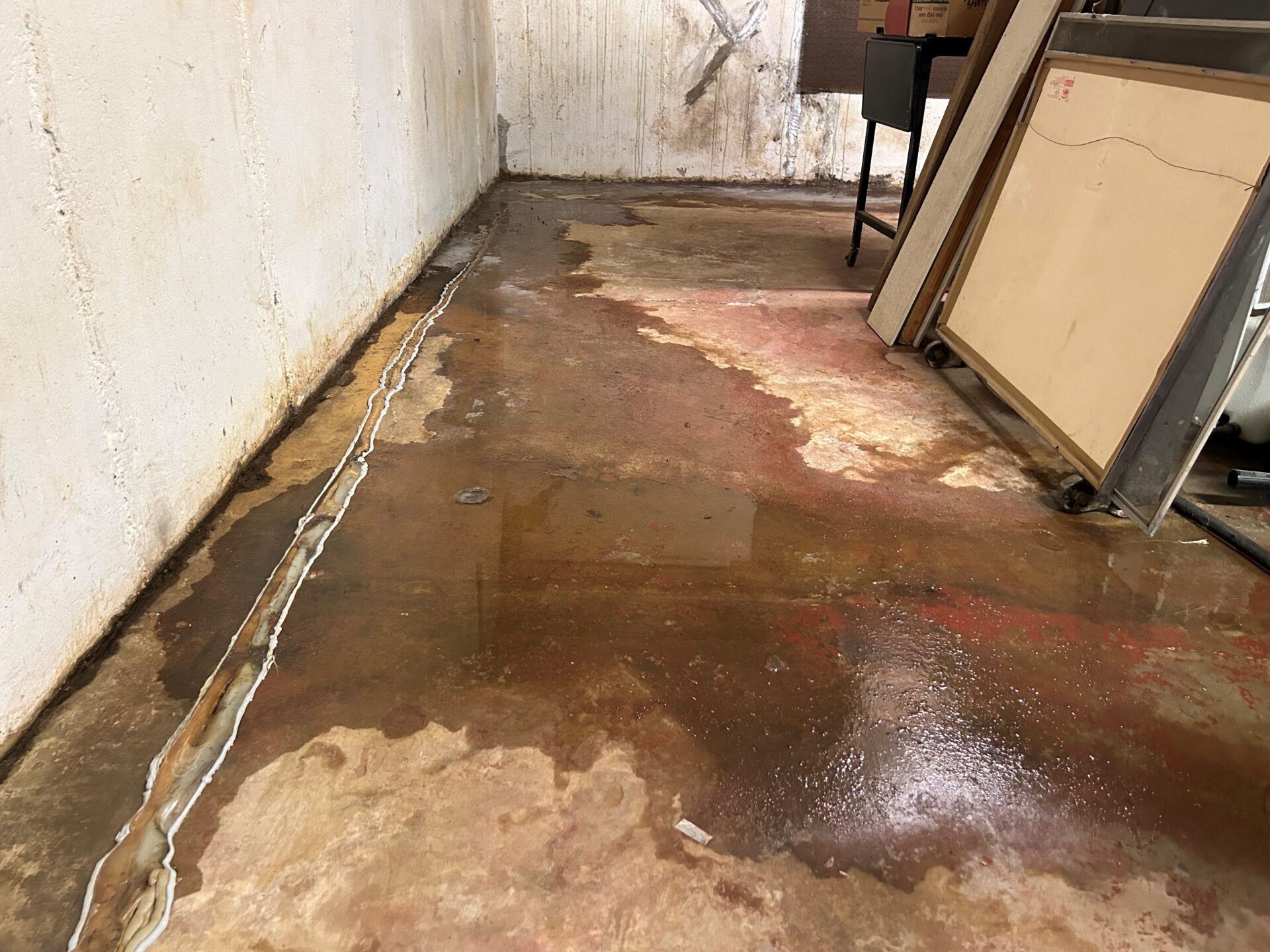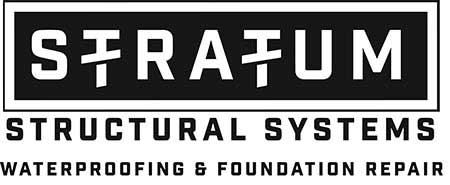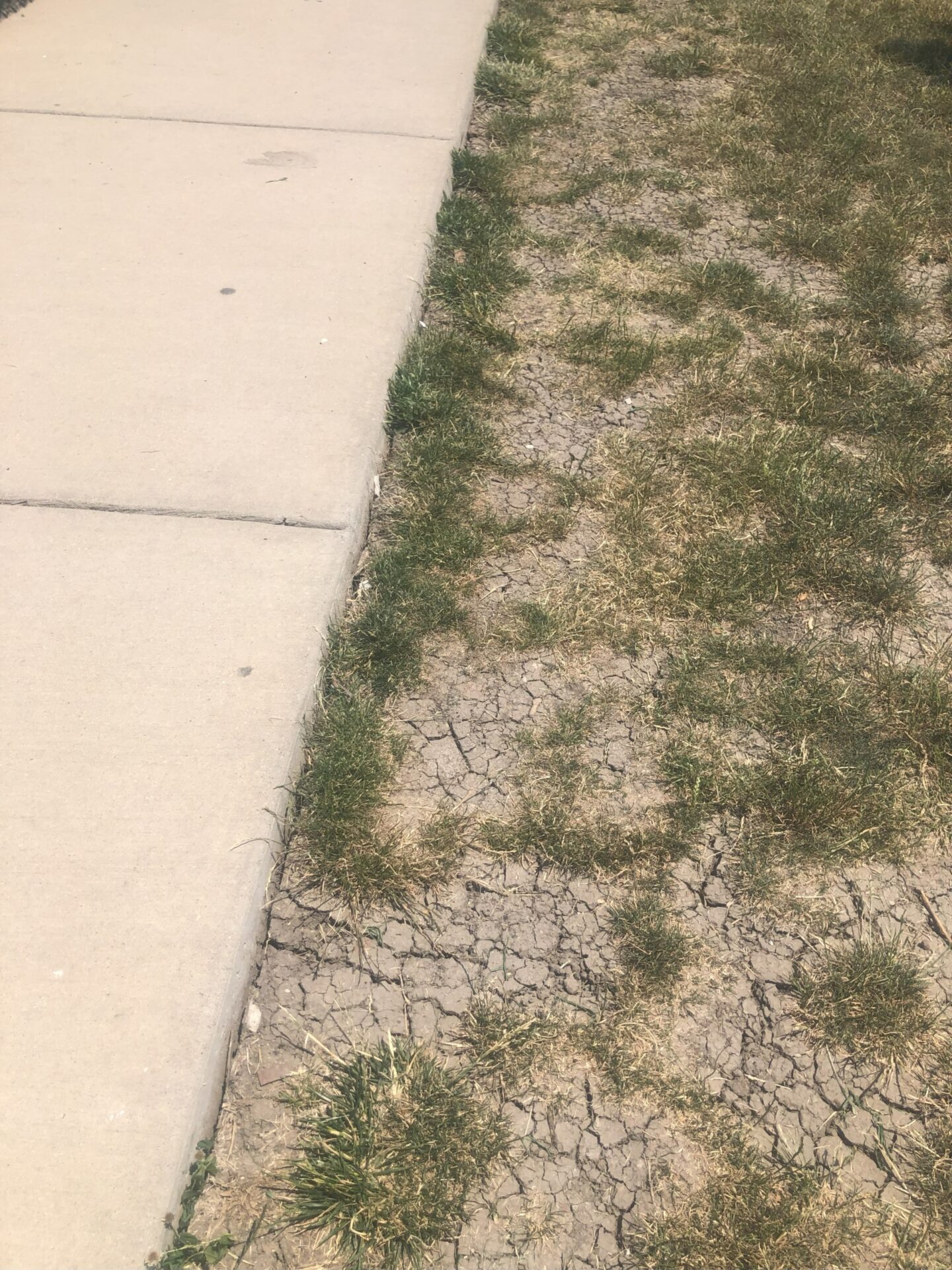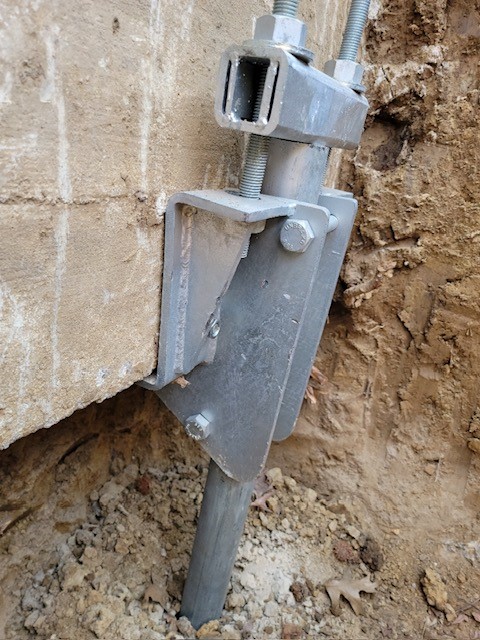The Pros and Cons of Interior vs. Exterior Basement Waterproofing

Protecting your home from water damage is crucial, and nowhere is this more important than in your basement. Water intrusion can lead to a host of problems, from structural damage to mold growth, potentially compromising your family’s health and your home’s value. In St. Louis, our unique combination of clay-rich soil and variable weather patterns makes basement waterproofing especially critical. So, do you need interior or exterior waterproofing for your St. Louis home? Let’s explore the different options so you can select the right one for you!
Common Causes of Water In Basements
Understanding basement water problems is crucial for homeowners to protect their property, maintain structural integrity, and ensure a healthy living environment. Water infiltration in basements can lead to significant damage, mold growth, and costly repairs if left unaddressed. By recognizing the common causes and signs of water infiltration, homeowners can take proactive measures to prevent or mitigate these issues.
Several factors can contribute to water in basements. Poor drainage and improper grading around the foundation can cause water to flow towards the house instead of away from it.
Hydrostatic pressure, which occurs when the soil becomes saturated, can force water through foundation cracks. These cracks, even small ones, in the foundation walls or floor can allow water to seep into the basement.
Faulty gutters and downspouts, when clogged or improperly installed, can lead to water accumulation near the foundation. Internal plumbing leaks from pipes, fixtures, or appliances can also contribute to basement moisture. Additionally, high humidity levels can cause condensation on cool basement surfaces.
Recognizing the signs of water infiltration is essential for early detection and prevention.
Look for obvious indicators of visible water, such as
- Puddles
- Standing water
- Wet spots on walls and floors
- White chalky residue on masonry (indicates water evaporation)
- Damp or musty odors
- The growth of mold or mildew on walls, floors
- Water stains or discoloration on walls, floors, or ceilings
- Warped paneling, peeling paint, or damaged carpeting
Noticing these signs should prompt you to take action. Contact a professional to assess potential water damage. Then, discuss your options for basement waterproofing.
Interior Basement Waterproofing: Pros & Cons
Interior basement waterproofing offers several advantages that make it an attractive option for many homeowners. This method is generally more cost-effective than exterior waterproofing, making it accessible to a wider range of budgets.
The installation process is less disruptive to the property as it doesn’t require extensive excavation around the foundation. This also means that the work can be completed more quickly, minimizing inconvenience to the homeowner. Additionally, interior waterproofing systems are often easier to maintain and repair, as all components are accessible from inside the basement. It helps solve problems of water build up under the basement slab itself
However, interior waterproofing is not without its drawbacks. One significant limitation is that it doesn’t prevent water from entering through the foundation walls. In this instance, a modern and properly installed system can manage water after it has penetrated the structure. Ignoring foundation cracks can lead to potential long-term issues with the foundation’s integrity.
Many interior systems require the installation of a sump pump, which adds to the overall cost and complexity of the solution..
Pros:
- More cost-effective
- Less disruptive installation
- Quicker to complete
- Easier maintenance and repairs
Cons:
- Doesn’t prevent water entry through the foundation walls
- Often requires a sump pump system
- Potential for larger structural issues if left unrepaired
Exterior Basement Waterproofing Pros & Cons
Exterior basement waterproofing is an approach from the exterior of the house that addresses water issues at their source. This method may prevent water from entering the foundation, providing robust protection for the structural integrity of the building.
By creating a barrier on the outside of the foundation walls, exterior waterproofing offers a longer-lasting solution that can significantly reduce the risk of water damage and related issues. This approach is particularly effective in areas with high water tables or where hydrostatic pressure is a persistent problem.
Despite its effectiveness, exterior waterproofing comes with several significant drawbacks. The process is typically much more expensive than interior methods, often requiring a substantial investment. Installation involves extensive excavation around the foundation, which can be disruptive to the property and may damage existing landscaping.
The work is also weather-dependent, potentially leading to delays or complications during installation. Additionally, the excavation process may reveal unforeseen issues with the foundation, potentially increasing costs and project scope.
Pros:
- May prevent water entry into foundation
- May protect overall structural integrity
- Provides a long-lasting waterproofing solution
Cons:
- Higher cost compared to interior methods
- Requires extensive excavation and possibly an exterior sump pump
- Installation dependent on weather conditions
- Potential for significant landscaping disruption
When to Do Exterior vs. Interior Basement Waterproofing
The decision between exterior and interior basement waterproofing depends on several factors, each with its own impact on effectiveness, durability, and basement usability.
Exterior waterproofing is generally more effective in managing water, as it prevents water from entering the foundation altogether. This method offers superior long-term durability, protecting the structural integrity of the building and reducing the risk of internal moisture problems. It allows for full use of the basement space without the need for internal drainage systems or sump pumps.
Interior waterproofing, while less comprehensive, can be highly effective for managing minor to moderate water issues. It’s less durable in the long term but can significantly improve basement usability by controlling moisture and preventing water accumulation on the floor.
When choosing between the two methods, consider the following factors:
- Severity of water problem: Extensive water issues may necessitate exterior waterproofing.
- Budget constraints: Interior methods are typically more budget-friendly.
- Property layout and accessibility: Difficult access for excavation may favor interior solutions.
- Local climate and soil conditions: Areas with high water tables or expansive soils might benefit more from exterior waterproofing.
Ultimately, the best approach often depends on the specific circumstances of each property. In some cases, a combination of both methods may provide the most comprehensive solution for basement water management.
Complementary Waterproofing Techniques
Incorporating complementary waterproofing techniques can provide you with peace of mind and significantly enhance your home’s protection. These methods work in harmony with your primary waterproofing system, creating a robust defense against moisture intrusion.
Proper grading and drainage around your home act as your first line of defense, guiding water away from your foundation before it becomes a problem. Well-maintained gutters and downspouts further support this effort by efficiently channeling rainwater away from your home’s perimeter.
Additionally, applying sealants and coatings to your basement walls adds an extra layer of protection, particularly in areas prone to minor seepage.
By implementing these supplementary maintenance techniques, you’re not just addressing current water issues. You’re proactively safeguarding your home against future problems.
This comprehensive approach can extend the life of your primary waterproofing system, potentially saving you from costly repairs down the line and ensuring a dry, healthy living space for you and your family.
Basement Waterproofing in St. Louis: Internal and External Services
At Stratum Structural Systems, we offer comprehensive basement waterproofing solutions tailored to the unique needs of St. Louis homeowners. Our experienced team provides both interior and exterior waterproofing services, ensuring we can address your specific water issues effectively.
Whether you need a cost-effective interior solution like sump pump installation and crack repairs or a more robust exterior approach involving foundation membranes and proper grading, we have the expertise to handle it all.
We understand that every property is different, which is why our experts will thoroughly assess your home’s unique characteristics before recommending the best course of action. With 40 years of combined experience in foundation repair, we’ll guide you through the decision-making process, explaining all possibilities, from best to worst-case scenarios At Stratum, our goal is to ensure you have a dry, healthy basement that stands the test of time in St. Louis’s challenging climate!




